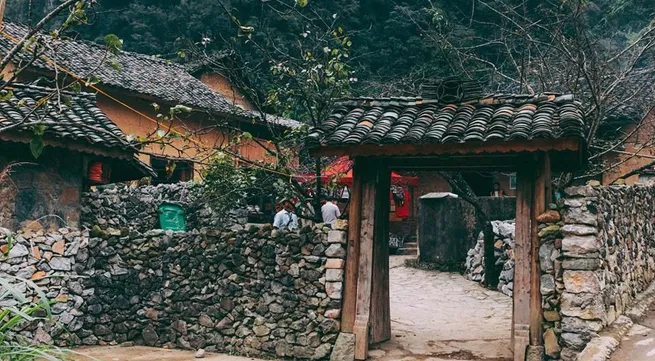Film industry – door to promote tourism

With impressive natural landscapes and a rich and diverse culture, Vietnam has abundant potential to promote tourism through the film industry. However, weak collaboration between film and tourism industries in Vietnam is hindering the country to promote its destinations.
The film industry has made significant contributions to promoting tourist spots, the cultural values of localities, and the heritages of Vietnam to the public, helping to attract more tourists and boost local socio-economic development.
Many places across Vietnam that were chosen as filming locations have become magnets to tourists. Typical among those are the house in Sung La commune, Dong Van district, Ha Giang province, which was set in the film ‘Chuyen Cua Pao’ (Story of Pao); the Trang An Landscape Complex in Ninh Binh province, which was featured in Hollywood blockbuster 'Kong: Skull Island'; and Do Do village in Binh Que commune, Thang Binh district, Quang Nam province, where the film ‘Mat Biec’ (Dreamy Eyes) was shot.
Recently, Sao Ha village, Van Chai commune, Dong Van district has become a magnetic spot for visitors to Ha Giang province after the release of the movies ‘Tet O Lang Dia Nguc’ (Lunar New Year Festival in Hell Village) and ‘Ke An Hon’ (Soul Eater).
Although Vietnam possesses numerous impressive natural landscapes and a unique and diverse culture, the country has not yet positioned itself as an attractive destination for foreign film crews. Domestic film crews encounter numerous challenges in finding, examining and considering the local settings, let alone international film producers.
Many film crews looking for local locations have received little interest from local authorities. Along with that, they have to face many obstacles regarding overlapping procedures and time-consuming administrative regulations, which might increase the time and costs for their film projects.
Given the situation, in 2023, the Vietnam Film Development Promotion Association (VFDA) officially announced the Production Attraction Index (PAI), intending to evaluate the interest of provinces and cities in welcoming film crews, thereby enhancing the attractiveness of each locality.
PAI is developed based on five criteria – financial support, information support, field support, legal procedures support and available infrastructure.
Through PAI, VFDA expects to promote the potential of the Vietnamese film industry and successfully introduce Vietnam’s "hidden gems" to the world.
PAI is more than just an index – it is the key that opens the door to a world of cinematic potential in Vietnam, according to VFDA.
While commenting about PAI, Indian film producer Rahul Sudesh Bali said, "I highly appreciate this initiative. The information provided by PAI and the website will assist us in comprehending more about support and incentives for film crews in each of Vietnam’s regions."
Soon after PAI was announced, ten localities registered, including Phu Yen Province, where tourism development has been given a boost thanks to cinematographic works in recent years.
Accordingly, the number of visitors to Phu Yen province increased sharply from 750,000 in 2014 to 1.8 million in 2019, when tourism revenue reached 2 trillion VND, 2.5 times higher since the release of the film ‘Toi Thay Hoa Vang Tren Co Xanh’ (Yellow Flowers on Green Grass) in 2015.
Phu Yen also tops the PAI rankings in Vietnam. Nine other provinces and cities participating in PAI include Tuyen Quang, Khanh Hoa, Nam Dinh, Da Nang, Hanoi, Thua Thien Hue, Ninh Binh, Bac Kan and Can Tho.
The local authorities take advantage of this opportunity to showcase the region's potential as an ideal destination for domestic and international filmmakers.
Facts have shown that films and television shows can significantly boost national brands and tourism development. This is an effective direction that needs to be further promoted. However, it requires a change in thinking and actions among managers and those operating in the culture, tourism and film industries.
In addition, local authorities and functional sectors need to strengthen synchronous and effective coordination and provide favourable conditions for film crews by simplifying administrative procedures and offering tax break policies.
This will help to open the door to promote the locality, attract tourists, and gradually build a brand for each region, thereby contributing to the building of a national brand.
Tags:





